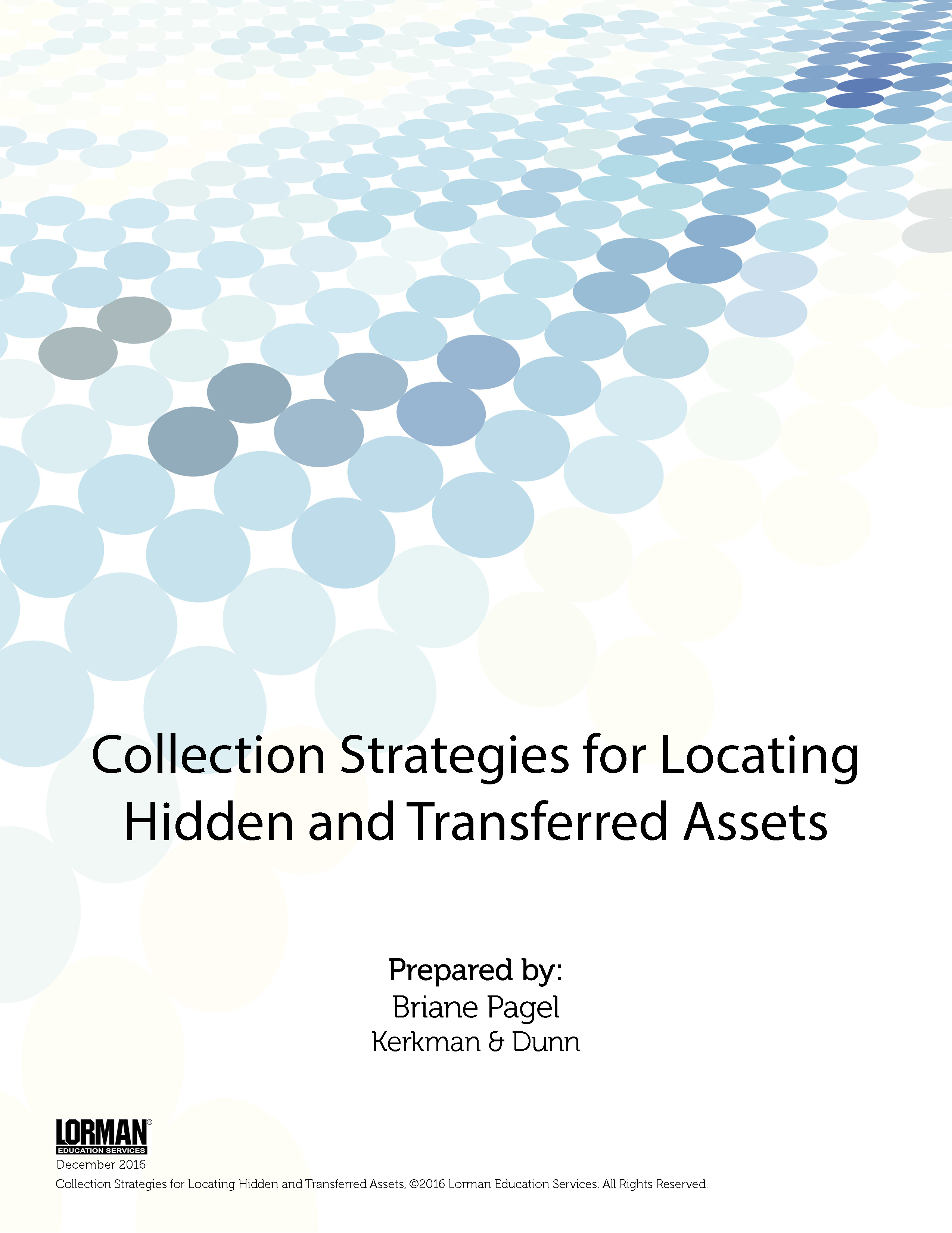What types of Assets might be hidden?
Depending on what you mean by hidden, anything can be “hidden” from the person looking for it. While some assets are easily hidden and/or hard to trace (think: cash, jewelry, collectibles), other assets may be ‘hidden in plain sight’ by creative titling (putting real estate or bank accounts in another person’s name, running things through a corporation or LLC).
As a result, litigators will want to focus on ways of finding any asset, regardless of how big (or small) it is, and how the asset is held or controlled (such as titling or deposits.) Once you have located the asset, you can then determine how best to seize it.
Keep in mind, too, that a debtor may not, technically, own an asset any more: transferring the asset, or title, is the easiest way to claim the property does not belong to the debtor.
Download this white paper to continue reading …
Briane Pagel is a Partner at Kerkman & Dunn. He has been litigating in complicated collection and consumer cases for 16 years, representing both creditors and debtors. Mr. Pagel has tried numerous cases in state and federal court and has helped clients utilize creative procedures to recover money and property even where prior trial counsel had failed.
Agenda
Faculty

Briane Pagel
Kerkman & Dunn
- Partner at Kerkman & Dunn
- Has been litigating in complicated collection and consumer cases for 16 years, representing both creditors and debtors
- Has tried numerous cases in state and federal court and has helped clients utilize creative procedures to recover money and property even where prior trial counsel had failed
- Writer of “The Marital Property Act’s Effects on Debt After Marriage” and “Sounding the Death Knell of Forced Consumer Arbitration”, both of which appeared in Wisconsin Lawyer
- Hosts and presents at the Wisconsin State Bar’s Annual Consumer Law Update, among other seminars related to consumer and collection law
All of your training, right here at Lorman.
Pay once and get a full year of unlimited training in any format, any time!
- Live Webinars
- OnDemand Webinars
- MP3 Downloads
- Course Manuals
- Audio Recordings*
- Executive Reports
- White Papers and Articles
- Sponsored Live Webinars
Additional benefits include:
- State Specific Credit Tracker
- Members Only Newsletter
- All-Access Pass Course Concierge
* For audio recordings you only pay shipping
Questions? Call 877-296-2169 to speak with a real person.
Thank You!
Download White PaperMore Program Information

Access to all training products $699/year
Unlimited Lorman Training
With the All-Access Pass there is no guessing what you will need for your yearly training budget. $699 will cover all of your training needs for an entire year!
Easy Registrations
Once you purchase your All-Access Pass you will never be any further than one-click away from attending any Lorman training course.
Invest in Yourself
You haven't gotten to where you are professionally by luck alone; it's taken a lot of hard work and training. Invest in yourself with the All-Access Pass.